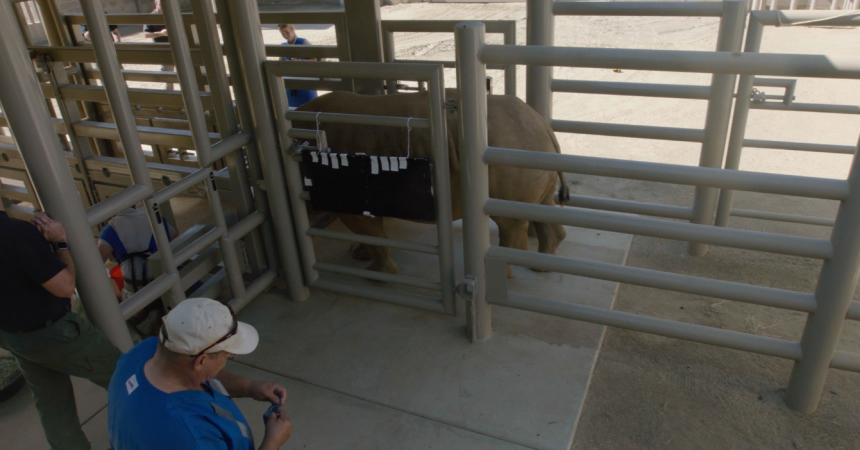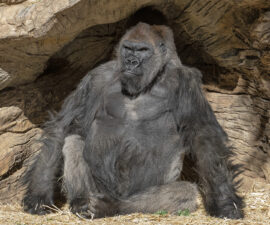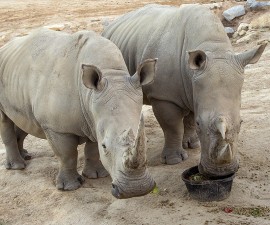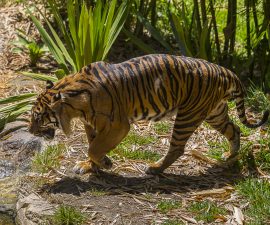Rhino Was Probably Target of Failed Poaching Attempt While in South Africa
The animal care team at the San Diego Zoo Safari Park enlisted the aid of the San Diego Fire-Rescue Department Bomb Squad on Monday (Aug. 29, 2016) to further examine Wallis, a 5-year-old female southern white rhino at the Nikita Kahn Rhino Rescue Center, who has a suspected bullet wound on her left side that has been slow to heal. A recent exam using a metal detector provided a strong signal indicating a brass or lead object—possibly a bullet or bullet fragment—under the current wound site. Today’s exam confirmed the existence of metal fragments inside the animal.
“This is not a usual medical situation, and our X-ray equipment was not powerful enough to penetrate through the two-and-a-foot thickness of the rhino to confirm our suspicion of metal fragments within her body wall,” stated Jim Oosterhuis, DVM, San Diego Zoo Safari Park. “We are grateful to the San Diego Fire Department Bomb Squad for providing their expertise and the type of equipment needed to do this. Wallis’ condition is not considered life-threatening, but this detection will help us to determine the next steps needed to heal her wound.”
The animal care team wanted to pursue all noninvasive diagnostic techniques available, to give them a better understanding of this chronic wound. “The bomb technicians are trained in X-raying animals, and people, for that matter,” bomb squad commander Captain John Wood said. “It’s a skill that’s rarely used, but we were happy to be able to help the Safari Park.”
Next steps will most likely be anesthetizing the animal and doing more X-rays that will pinpoint the specific location of the metal fragments. The wound does not appear to have an adverse affect on Wallis’ overall health. She is eating well and shows no sign of decreased activity.
Wallis is one of six female rhinos that were relocated to the Safari Park from private reserves in South Africa, as part of a collaborative conservation effort to save the critically endangered northern white rhino—and all rhino species—from extinction. Keepers at the Nikita Kahn Rhino Rescue Center have been working with Wallis and the other rhinos to build relationships and train them, through positive reinforcement, to receive any needed medical procedures, as they could potentially serve as future surrogate mothers for a northern white rhino. This training has allowed the veterinarians to be able to interact with and treat Wallis on a daily basis.
Strong speculation is that Wallis may have been the target of a failed poaching attempt while in South Africa, where shooting and killing rhinos for their horns has dramatically affected rhino populations in the wild and in private reserves. Rhinos are poached for their horn, which is made of keratin—the same material that forms human fingernails. Rhino horn has been erroneously thought to have medicinal value and is used in traditional remedies in some Asian cultures. In addition, objects made of rhino horn have more recently become a “status symbol,” purchased to display someone’s success and wealth, because the rhino is now so rare and endangered.
San Diego Zoo Global has been working for decades, along with other accredited zoos, to keep a sustainable population of rhinos safe under human care while working to protect them in sanctuaries in the wild. The Nikita Kahn Rhino Rescue Center furthers this commitment and helps in establishing the Safari Park as a sanctuary to protect rhinos—at a time when an average of three rhinos are killed each day in the wild by poachers. This rate is unsustainable; and without intervention, we could see rhinos go extinct in the wild in as little as 15 years.





